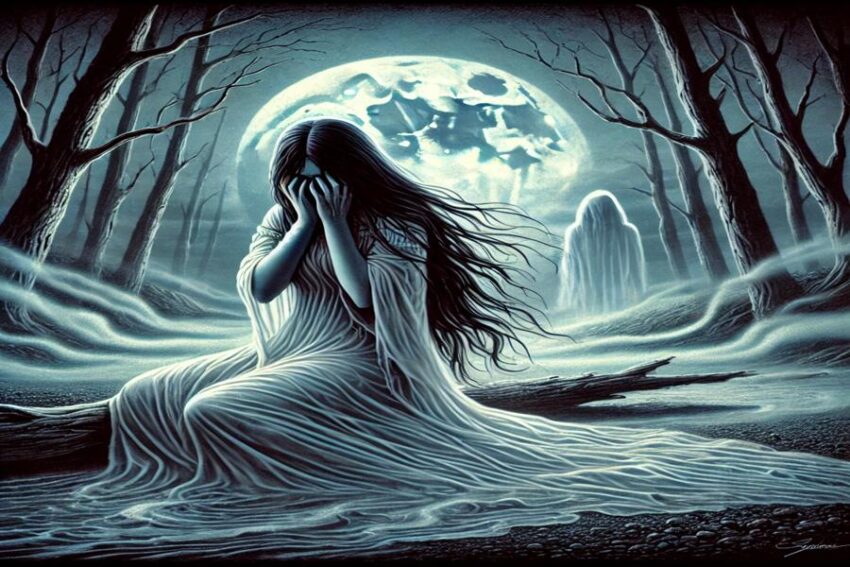Latin America is rich with folklore that’s equal parts eerie, mysterious, and thrilling. The monsters and spirits from these tales range from terrifying to downright bizarre, blending ancient indigenous myths with local legends and stories passed down through generations. From ghostly women wandering the night to blood-sucking creatures and shapeshifting demons, this list covers some of the most fascinating and fearsome beings from Latin American folklore. So, get ready for a fun, spooky journey through the legends that have been chilling spines for centuries!
Table of Contents
1. La Llorona (The Weeping Woman)
La Llorona is perhaps the most famous ghost story in Latin American folklore. She’s the ghost of a woman doomed to wander near rivers and lakes, crying out for the children she drowned in a fit of rage or despair. Legend has it that if you hear her wailing, misfortune or even death could be near. This tale, mainly from Mexico, has variations across Central America, warning children to stay away from bodies of water at night and instilling a sense of caution.
2. El Chupacabra
Ah, the Chupacabra! Known as the “goat-sucker,” this cryptid supposedly feasts on the blood of livestock, particularly goats. Sightings started in Puerto Rico in the 1990s, but reports quickly spread to Mexico and the United States. Described as a reptilian creature with spines down its back or as a hairless, dog-like beast, the Chupacabra has become a legend, appearing in everything from cartoons to documentaries.
3. El Silbón (The Whistler)
From the plains of Venezuela and Colombia comes El Silbón, a ghostly figure known for his eerie whistle. Legend says he’s the spirit of a young man who killed his father and was cursed to carry his bones in a sack for eternity. If you hear his whistle far away, it’s a warning to flee—because if it sounds close, he might already be right behind you. The haunting sound is said to be a sign of death, and his presence often brings storms and misfortune.
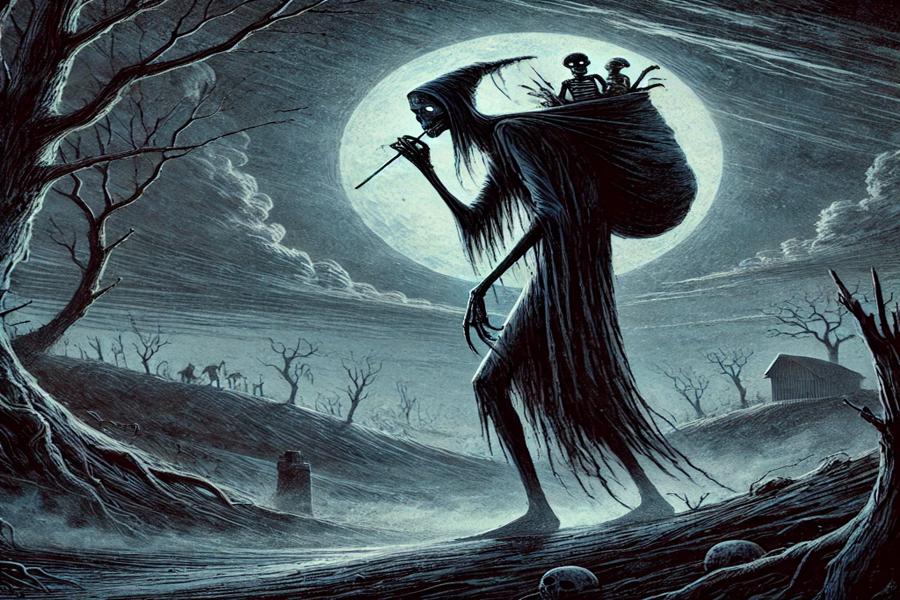
4. El Cadejo
El Cadejo is a supernatural dog-like creature found in Central American folklore, especially in El Salvador, Honduras, and Guatemala. There are two versions: a benevolent white Cadejo that protects travelers, and an evil black Cadejo that leads people astray or attacks them. These mystical dogs are said to be guardians and harbingers, and seeing one can mean you’ll face a test of courage or danger.
5. La Ciguapa
La Ciguapa is a beautiful, mystical creature from Dominican folklore with a twist: her feet are turned backward, making her tracks impossible to follow. She lures men into the forests or mountains and leads them to their doom, using her mesmerizing beauty and hypnotic singing voice. The legend varies, but she is often seen as a warning against wandering off or being seduced by mysterious strangers.
6. El Sombrerón (The Little Hat Man)
In Guatemalan legend, El Sombrerón is a short, charming man who wears a large hat and plays a guitar. But don’t let his appearance fool you—he has a knack for braiding horses’ manes and the hair of young women he fancies. If a girl catches his attention, she might find herself unable to eat or sleep, haunted by the sound of his guitar. The only way to break the curse? Cutting her hair.
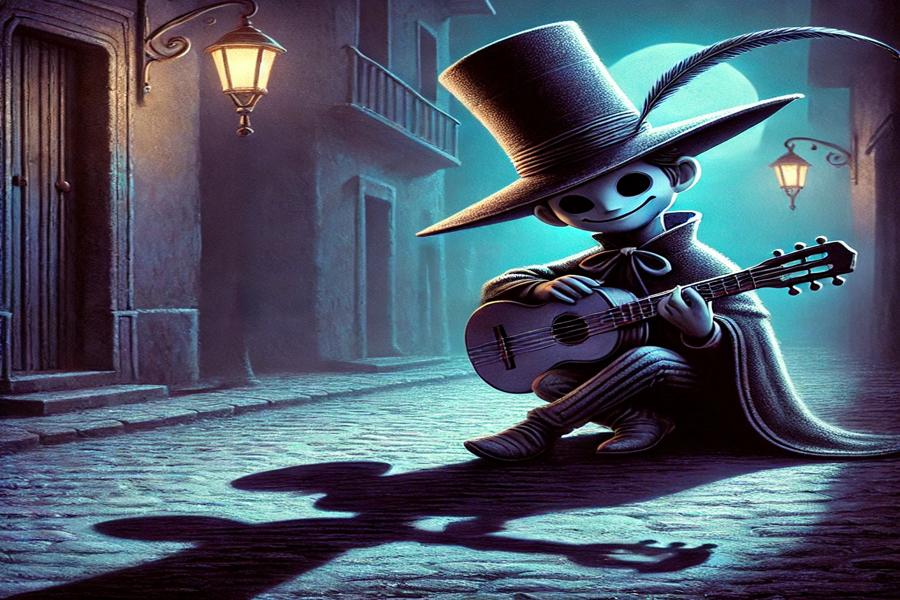
7. La Siguanaba
From El Salvador and other parts of Central America, La Siguanaba is a spirit who appears as a beautiful woman to lure men, particularly those who are unfaithful, away from their path. When they approach her, she reveals her true form—a hideous creature with the face of a horse or a skull. She’s a warning against infidelity and recklessness, scaring those who dare to wander alone at night.
8. El Duende
A mischievous goblin-like creature, El Duende is common in many Latin American cultures, including Mexican and Filipino folklore. He is said to live in the forests and mountains, sometimes helping lost travelers, but often playing pranks on children by stealing their toys or hiding their things. In some stories, El Duende even tries to clip the nails of children who don’t trim them!
9. La Tunda
La Tunda is a shapeshifting witch from Afro-Colombian folklore who lures her victims into the forest by taking the form of someone they trust. Once they are alone, she feeds them “tunda,” a magical, paralyzing substance that keeps them under her control. It’s said she has a wooden leg shaped like a mill and can’t hide the smell of her rotting, forest-dwelling nature.
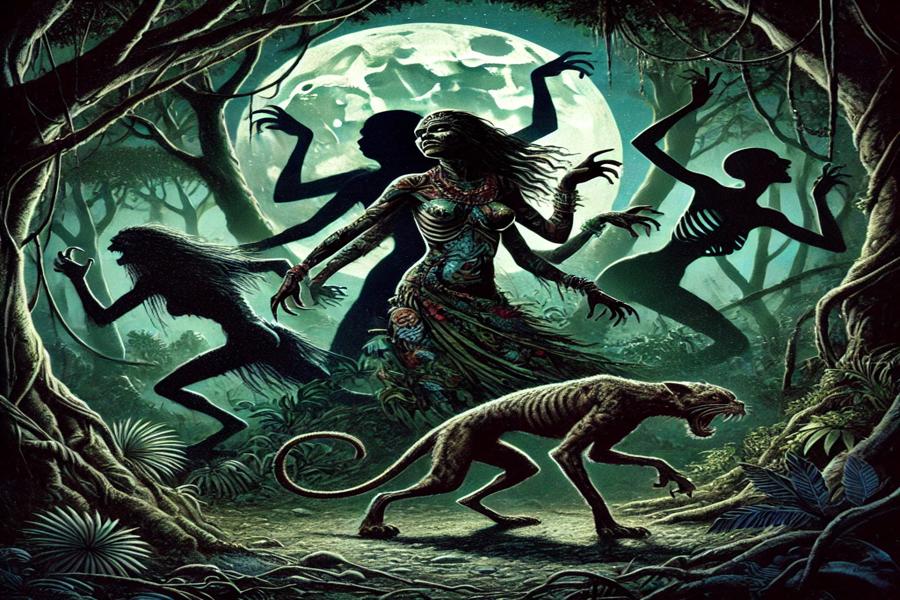
10. El Cucuy (El Coco)
Known as the Latin American equivalent of the Boogeyman, El Cucuy is a figure used by parents to scare children into behaving. He’s described as a small, dark, shadowy monster that hides in closets or under beds, ready to snatch away disobedient kids. The legend has been passed down through generations and is a staple of many childhoods across Mexico and Latin America.
11. El Pombero
El Pombero is a mischievous spirit from Guaraní mythology in Paraguay. Described as a small, hairy man who lives in the countryside, he is known for playing tricks on farmers by releasing their animals or scaring them with strange noises. Although he’s mischievous, he can also be protective if appeased with offerings of tobacco or rum.
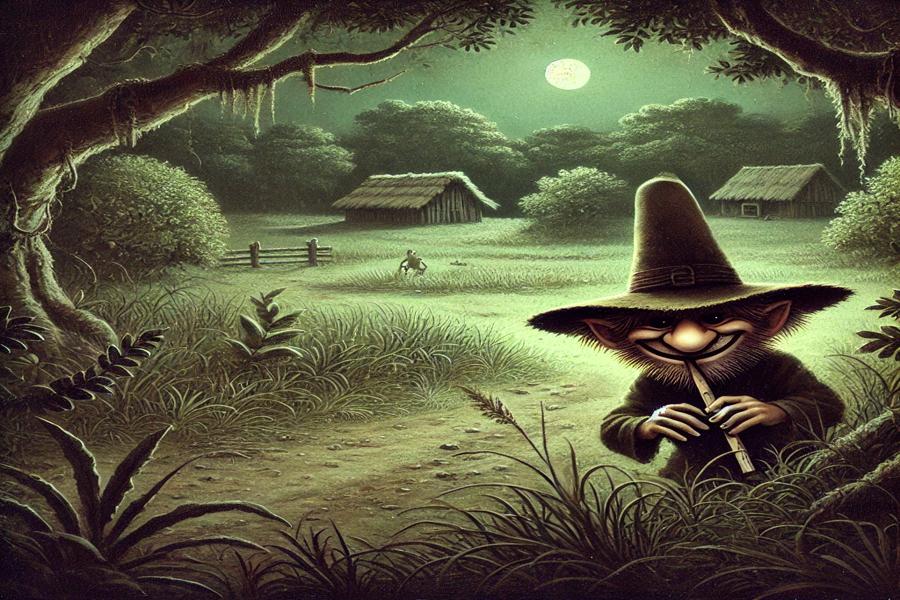
12. La Patasola (The One-Legged Woman)
La Patasola is a ghostly figure from Colombian folklore who appears as a beautiful woman but has only one leg. She lures men deep into the jungle, where she reveals her monstrous, vampiric nature and attacks them. Often described as a guardian of the forest, she punishes those who harm wildlife, especially hunters and loggers.
13. El Nahual
El Nahual comes from Mexican folklore, particularly among indigenous groups. A Nahual is a shapeshifter, usually a person who can transform into an animal such as a jaguar, wolf, or bird. Traditionally seen as protectors or sorcerers, they can move between the human and animal worlds. In some stories, they use their powers for good, while in others, they are feared as dark, mystical beings.
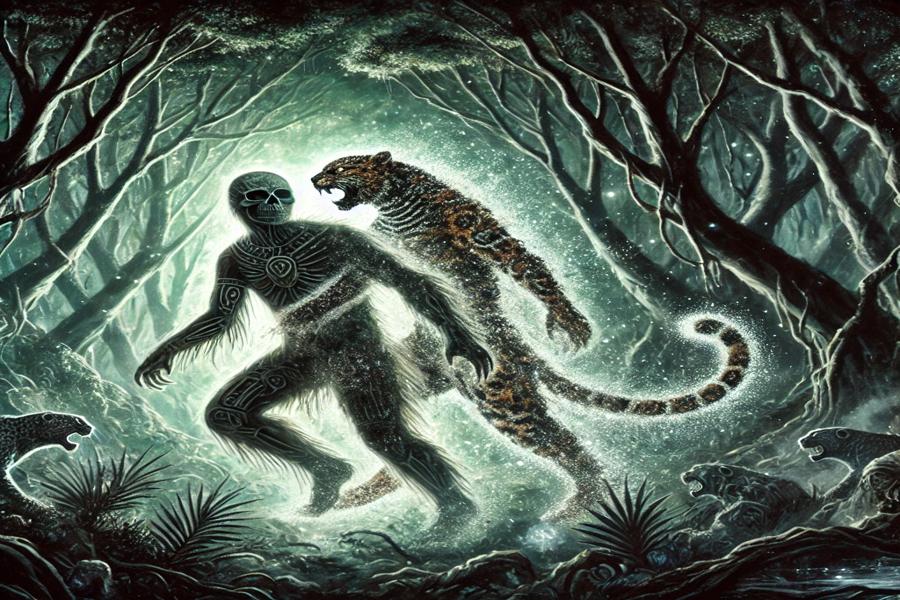
Conclusion
Latin American folklore is filled with creatures as fascinating as they are terrifying, each with its unique story and cultural significance. These monsters, spirits, and supernatural beings reflect the blend of indigenous, colonial, and local traditions, providing a glimpse into the fears, values, and creativity of the region’s cultures. Whether they’re warning us to stay away from dangerous places or reminding us to be kind and cautious, these legendary creatures continue to captivate and chill audiences, especially around Halloween!
